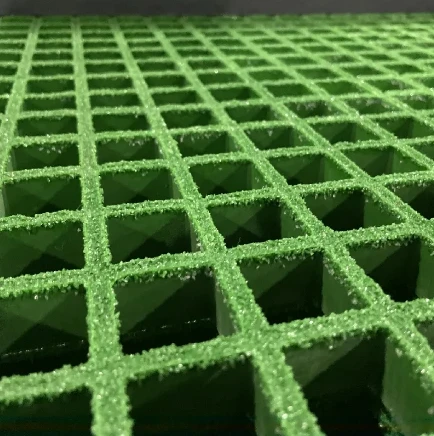loading...
- No. 9, Xingyuan South Street, Dongwaihuan Road, Zaoqiang County, Hengshui, Hebei, China
- admin@zjcomposites.com
- +86 15097380338
- Welcome to visit our website!
Exploring the Benefits and Applications of Sectional Water Tanks for Efficient Storage
Understanding Sectional Water Tanks Features, Benefits, and Applications
In modern water management systems, the design and functionality of water storage solutions play a pivotal role in ensuring efficient supply and sustainability. Among various types of water storage solutions, sectional water tanks have garnered considerable attention for their versatility and practicality. This article will explore the features, benefits, and applications of sectional water tanks, providing insights into why they are favored in various contexts.
What are Sectional Water Tanks?
Sectional water tanks, also known as modular water tanks, are made up of multiple panels or sections that are assembled on-site to create a large water storage unit. These tanks are typically constructed from materials such as galvanized steel, stainless steel, fiberglass, or reinforced plastic. The ability to assemble tanks of nearly any size makes them particularly useful in projects where space or capacity requirements may vary.
Features of Sectional Water Tanks
1. Modular Design One of the standout features of sectional water tanks is their modularity. Their construction consists of interchangeable sections that allow for easy expansion or reduction of storage capacity as needed. This characteristic makes them ideal for both new installations and refurbishment projects.
2. Customization Sectional tanks can be tailored according to specific needs and dimensions. This customization can include different shapes, sizes, and materials based on the intended use, be it for potable water, irrigation, or industrial applications.
3. Durability Built to withstand various environmental conditions, sectional water tanks are highly durable. Construction materials like galvanized steel and stainless steel ensure protection against corrosion, while reinforcement methods contribute to their structural integrity.
4. Ease of Installation The modular nature of sectional water tanks allows for quicker installation compared to traditional welded tanks. Sections can be transported easily and assembled on-site, minimizing disruption and labor costs.
5. Maintenance and Accessibility Sectional water tanks are designed with maintenance in mind. Many tanks feature access panels that facilitate cleaning and inspection, which are critical for ensuring water quality over time.
Benefits of Sectional Water Tanks
sectional water tanks

1. Cost-Effectiveness The flexible sizing and assembly of sectional tanks mean that they can often be more cost-effective than pre-fabricated tanks. Their modularity allows for incremental investment, as users can enhance their water storage capacity as organizational needs grow.
2. Space Efficiency In urban environments, where space can be a premium, the ability to customize the design and size of sectional tanks allows for optimized use of available areas. They can be installed in tight spaces and still provide substantial storage.
3. Environmental Sustainability By providing efficient water storage solutions, sectional tanks support sustainable water management practices. They can be utilized for rainwater harvesting, contributing to the reduction of water waste and the promotion of sustainable resources.
4. Versatility Sectional water tanks are proficient in a wide array of applications, from residential uses, agricultural irrigation systems, to large-scale industrial facilities. Their ability to accommodate varying requirements makes them an invaluable asset in many sectors.
Applications of Sectional Water Tanks
1. Residential Use Homeowners commonly use sectional water tanks for rainwater harvesting, irrigation, and emergency water storage, ensuring a consistent water supply for their household needs.
2. Agriculture In agricultural settings, these tanks provide essential water storage for irrigation systems, especially in areas prone to drought, thereby enhancing crop productivity.
3. Industrial Use Industries rely on sectional water tanks for storing process water, firefighting water supplies, and wastewater management. Their durability and capacity to handle specialized industrial requirements make them crucial in such environments.
4. Commercial Settings Businesses deploy sectional tanks to manage water supply for commercial operations, ensuring they have sufficient resources for daily activities and emergencies.
Conclusion
Sectional water tanks represent a comprehensive solution for modern water storage needs. Their modular design, durability, and customization options make them attractive for diverse applications—from residential to industrial. As we continue to seek sustainable water solutions, the relevance and utility of sectional water tanks are likely to grow. Embracing these innovative designs helps communities manage their water resources more effectively, thereby supporting the sustainability of our planet.
-
The Rise of FRP Profiles: Strong, Lightweight, and Built to LastNewsJul.14,2025
-
SMC Panel Tanks: A Modern Water Storage Solution for All EnvironmentsNewsJul.14,2025
-
GRP Grating: A Modern Solution for Safe and Durable Access SystemsNewsJul.14,2025
-
Galvanized Steel Water Tanks: Durable, Reliable, and Ready for UseNewsJul.14,2025
-
FRP Mini Mesh Grating: The Safer, Smarter Flooring SolutionNewsJul.14,2025
-
Exploring FRP Vessels: Durable Solutions for Modern Fluid HandlingNewsJul.14,2025
-
GRP Structures: The Future of Lightweight, High-Performance EngineeringNewsJun.20,2025
